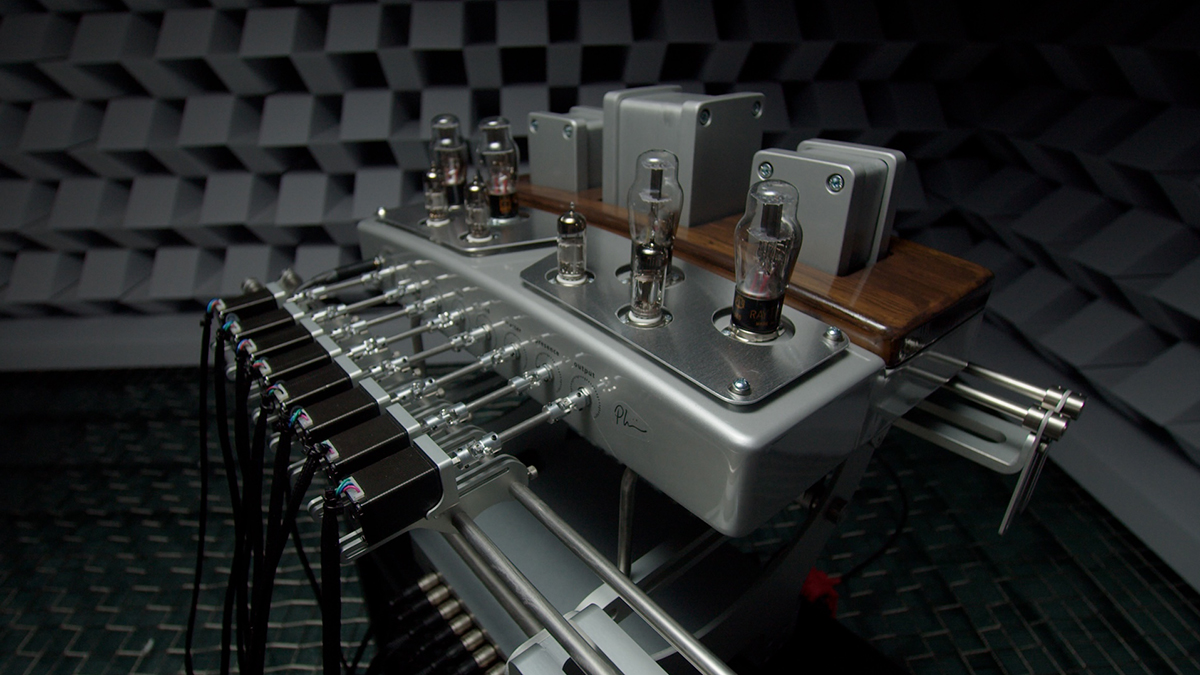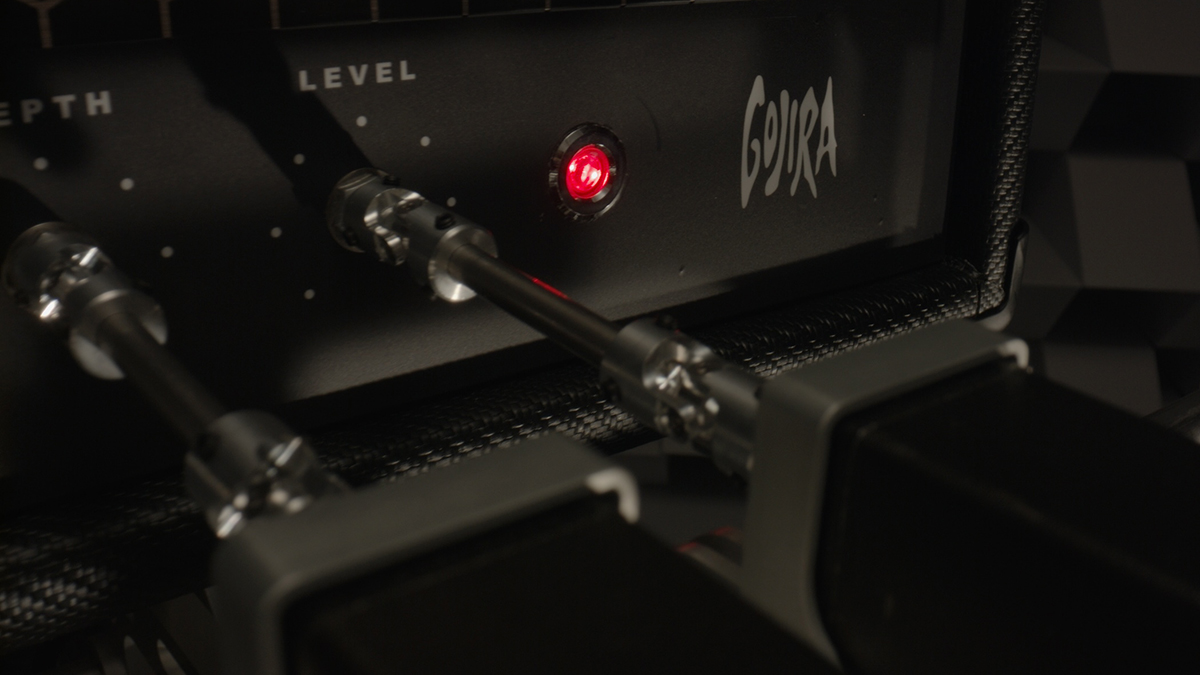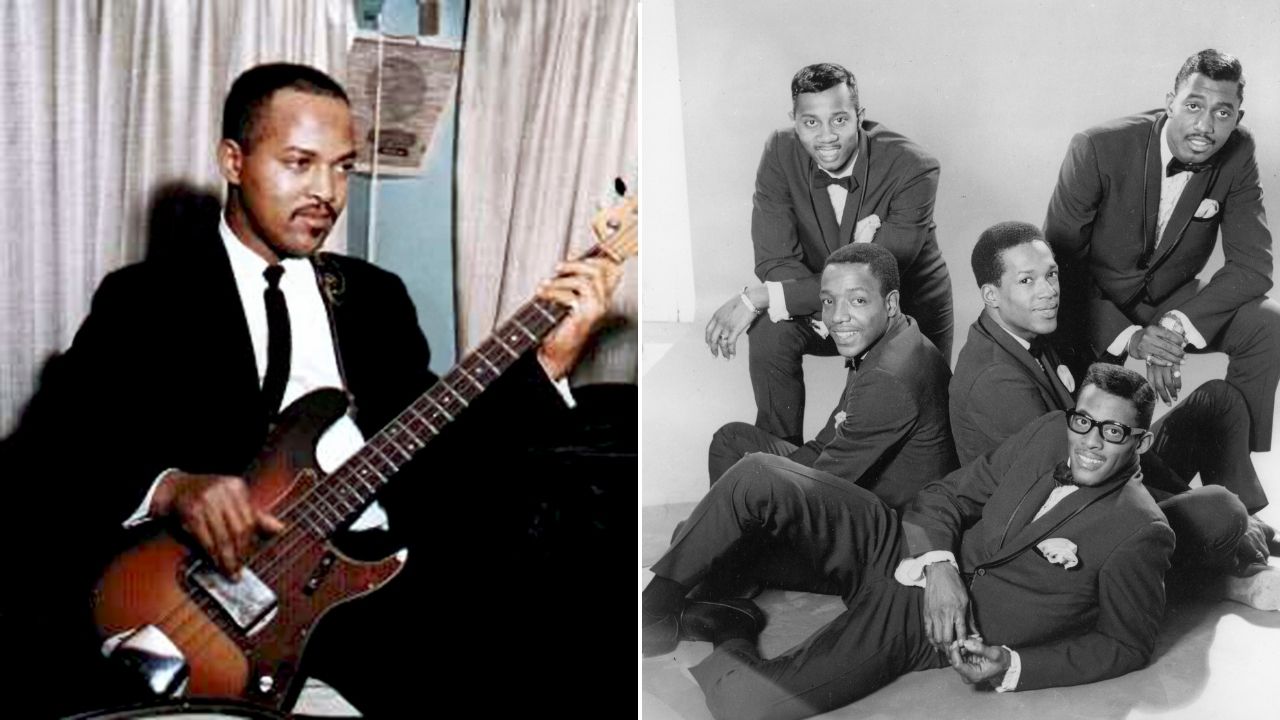“Faster, smarter and more accurate than any human”: Neural DSP unveils TINA – a robot that promises to revolutionize the digital amp modeling world forever

Neural DSP has unveiled its latest innovation, which the audio specialist says will usher in a completely new age of digital amp modeling and go beyond anything we’ve ever seen before.
2024 has witnessed a boom in the world of boundary-pushing digital amp gear, from Positive Grid’s proprietary Spark AI tone building tech to IK Multimedia’s AI machine modeling TONEX One stompbox.
Now, Neural DSP has thrown its own hat into the ring by unveiling a robot that uses machine learning to deliver “even more precise amplifier modeling”.
Yes, you read that correctly. Neural DSP has announced TINA – a Telemetric Inductive Nodal Actuator data-collection robot that is said to authentically and faithfully model the sonic nuances of a guitar amp at “an unprecedented level”.
There’s a lot to unpack there, but the firm has made its intentions for TINA crystal clear. Neural DSP has pulled no punches in waxing lyrical about the step forward this represents for the modeling world, with TINA promising to deliver “an unparalleled level of precision” that would be physically impossible for human data collectors to match.
“Meet TINA, the first robot capable of modeling amplifiers with unparalleled precision and speed,” says Neural DSP, who adds TINA is “faster, smarter and more accurate than any human”.
So, how does it work? Well, for the purposes of amp modeling, it looks as though TINA – a physical robot – is used to robotically access the entire spectrum of every control’s range by physically connecting with the amp via its actuator arms.
All the latest guitar news, interviews, lessons, reviews, deals and more, direct to your inbox!
These are then used to sweep through each parameter, whose output is recorded for modeling purposes. From this data, a digital neural network is trained to replicate the behavior of the chosen device.
What’s the benefit of doing it this way? Not only does Neural DSP assert that TINA helps remove human bias and subjectivity, but it also dives deeper in faithfully emulating the microscopic nuances of an amp.
“In the spaces between the markings on an amplifier’s controls – gain, bass, mid, treble, presence, master – there is an entire universe of complex interactions and sonic distinction,” TINA’s creator explains.
“But in trying to digitally emulate that process, even snapshot models of different configurations of those controls cannot translate all of the possible fine-tuned interactive combinations, and managing those million or more combinations would be impossible.”
And that’s where TINA comes in: “By combining robotic data collection with machine learning, Neural DSP can distill the full range of an amp’s continuous control into a single neural network.
“The collected data is always a complete representation of the device and its history; every tube, every transformer, every pot, every ding, and every scratch; anything you can hear and feel will be a part of the data the models are trained on.”

As per TINA’s launch video, the robot has been modeling the amplifiers behind its recent CorOS 3.0.0 Plugin Compatibility, which will see its flagship Quad Cortex multi-effects pedal finally work in tandem with Neural DSP’s various recording plugins.
“TINA is the backbone of our robust and automated modeling pipeline, pushing the boundaries of model fidelity,” notes Aleksi Peussa, Machine Learning Team Lead and Researcher at Neural DSP Technologies. “The collected data provides the ground – truth for the sound and feel of the device. No assumptions, no preferences, no limitations. Purely data.
“The vast amount of data along with advanced machine learning approaches can systematically push model accuracy to unparalleled levels of realism. Our goal is always to create models that are indistinguishable from the real thing, even by experts.”
So, it’s a pretty significant release, and TINA may well serve as a significant milestone in the annals of gear history. Who knows: we may be looking back at this development as a genuine turning point in the trajectory of digital amp modeling.
What is also intriguing is the fact TINA can “digitally replicate analog devices, such as guitar amplifiers”. It's telling that general “analog devices” are mentioned. Could we also see TINA modeling physical pedals? Time will tell.
Visit Neural DSP to found out more about TINA and its CorOS 3.0.0 update.

Matt is the GuitarWorld.com News Editor, and has been writing and editing for the site for five years. He has a Masters in the guitar, a degree in history, and has spent the last 19 years playing everything from blues and jazz to indie and pop. During his GW career, he’s interviewed Peter Frampton, Zakk Wylde, Tosin Abasi, Matteo Mancuso and more, and has profiled the CEOs of Guitar Center and Fender.
When he’s not combining his passion for writing and music during his day job, Matt performs with indie rock duo Esme Emerson, and has previously opened for the likes of Ed Sheeran, Keane, Japanese House and Good Neighbours.

